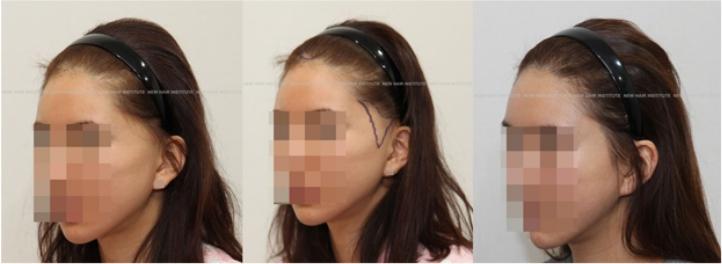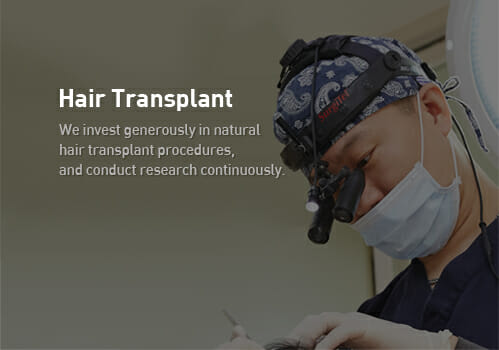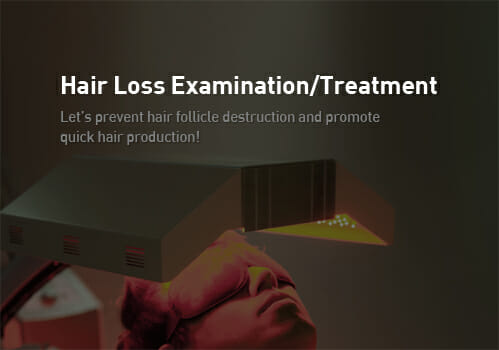Even 1% more satisfactory!
Even 1% more successful surgeries!
Result guaranteed 1% Up system
Various surgical procedures, various types of equipment
New Hair Institute will provide them generously.
FUE2 Enhanced Non-incision Reduction of scars with a 0.8 mm punch
Non-incision hair transplant determines the depth and the manual/automatic mode of the punch used in collecting the best hair follicles, depending on the patient's scalp condition and area. The pictures below compare the hair follicles taken with the FUE2 (follicular unit extraction enhanced) non-incision versus the hair follicles taken with the incision. You will see that the amount of hair follicle cell tissue attached to the lower part of the hair follicle is sufficient. The hair follicle cells taken by FUE2 (follicular unit extraction enhanced) non-incision do not lose any of the important elements.
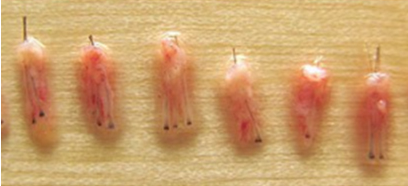
< FUE ² (reinforced non-incision)
follicle cells collected by non-incision hair transplantation>
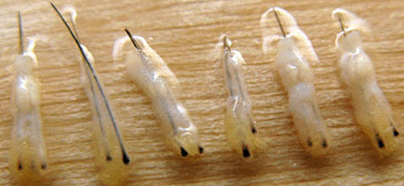
< Hair follicle cells collected by incisional hair transplantation >

NHI New Hair’s Slit Method Hair Transplant
Tight hair transplant, which is a high-density hair transplant, is a proposition that can be only established with a high engraftment rate. No matter how tightly grafted the hair is, if the transplanted hair follicles cannot produce hair, it will result in sparse hair. To solve the problems in high-density transplant and high engraftment rate simultaneously, NHI New Hair has been continuously studying the slit method hair transplant.

Thin Needle Thickness
In the slit method, the thickness of the needle is thinner than the thickness of the hair follicle.
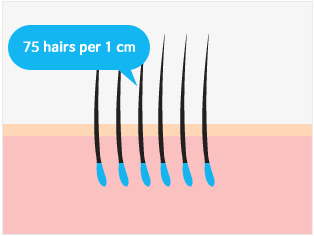
High Density
Ultra-high density transplant is possible.
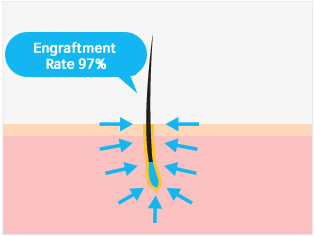
Healthy Hair Follicle Transplant
The pores made by the slit method are narrow, but the skin and hair follicles must be resilient to allow thick follicles
to be transplanted.
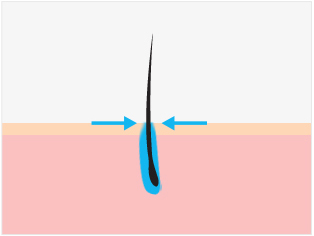
Minimizing scars
As transplantation is performed after the bleeding stops, scar formation is minimized
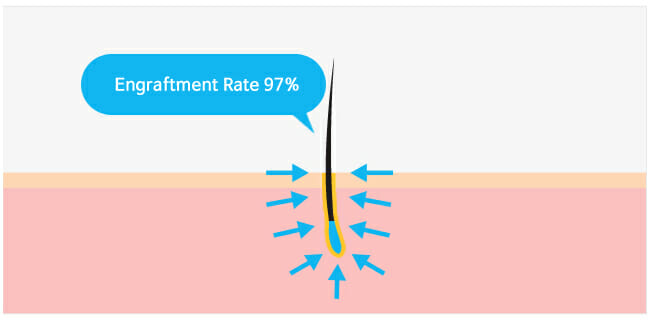
Snug Fit Phenomenon
The Snug Fit phenomenon is very important in the slit method hair transplant. This is because there are many advantages if the hair follicles are grafted by fitting them well into the holes (slits) made on the scalp. The small pores (slits) remove the space between the transplanted hair follicle and the scalp, and keep them tightly fit so that the hair follicle cells get in contact with the scalp in a large area immediately after transplantation, thus facilitating nutrient supply. This phenomenon helps increase the engraftment rate not only by increasing the amount of effusion of hair follicle cells, but also by preventing the coagulated blood from running between the hair follicle and the scalp.
New Hair’s Long-term Preservative Solution
The hair follicle cells that have been stored in a long-term preservative solution have an increased engraftment rate in hair transplant so that they can prevent an attack of active oxygen in the blood vessel recombination process after they are transplanted in the hair loss area. Furthermore, when the hair transplant is performed with a 100% slit method, it will shorten operation time, and undamaged and healthy hair follicles can be implanted even after preserving the hair follicles for an extended period.

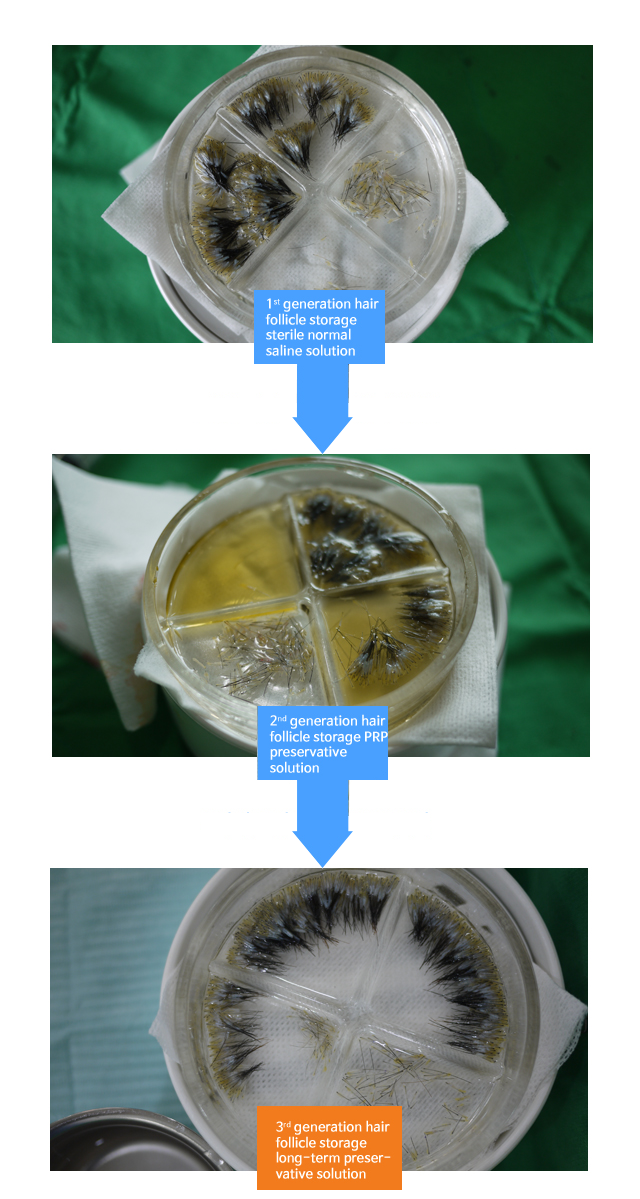
Efforts to increase hair transplant engraftment rate
If 1,000 hairs are implanted, 930 to 970 hair follicles will survive successfully. Due to various unknown causes, 30 to 70 hair follicles die without being able to take root in our bodies. The purpose of using a long-term preservative solution is to keep at least one more hair follicle engrafted, which is part of NHI New Hair's efforts.

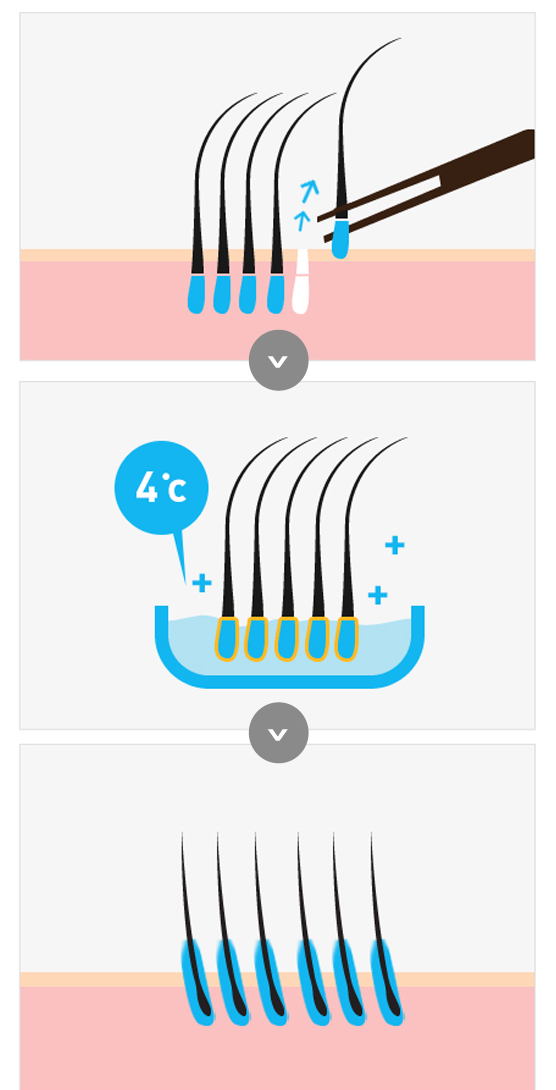
Storage Temperature of Hair Follicle Cells
The ideal hair follicle cell storage temperature of 4℃ should be maintained.
Storage temperature is as important as the location where the hair follicle cells are stored. Using refrigerants or ice makes it difficult to maintain accurate temperatures for a long period of time. There is also the disadvantage of having to replace it frequently. To maintain the most ideal hair follicle cell storage temperature for hair transplant, at 4℃, New Hair uses its own 4℃ low temperature water retention device.

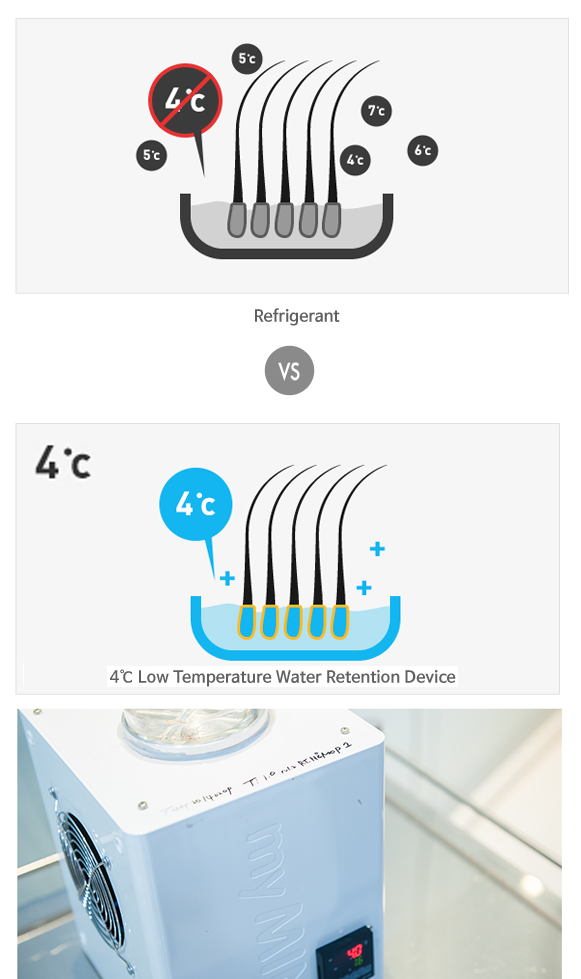
Use of a High Magnification Microscope
At the International Society of Hair Restoration Surgery (ISHRS), where doctors from the United States, Canada, and Europe play a key role, the issues on microscopy at the time of the hair transplant is almost not mentioned anymore. Many papers and presentations have already reported that the hair transplant using a microscope improved the results over 20% in the early 90s, and there is an agreement on this. Unfortunately, in Korea, it is rare that a microscope is used to transplant hair. There are many reasons, but, first of all, an increased number of hairs can be separated by an individual if a microscope is not used. It is economically advantageous because the operation can be carried out with only a small number of people.



Examination of hair fullicles by using a microscope
A microscope must be used to reduce loss and damage of hair fullicles.
When using a microscope for hair transplant, the number of implantable hair fullicles increases by 25%.

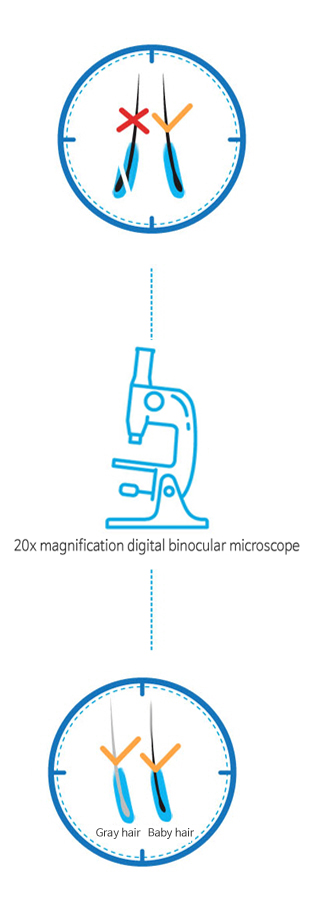
Aqua Cutting
Hair transplant is a type of surgery to transplant 'hair follicle cells', the basic cell tissues that induce hair to grow. Until these cell tissues are transplanted into the forehead and successfully placed, they must endure the elements with the nutrients supplied from the moisture that they have. Therefore, minimizing the exposure of the hair follicles to air is the best way to succeed in performing hair transplant.
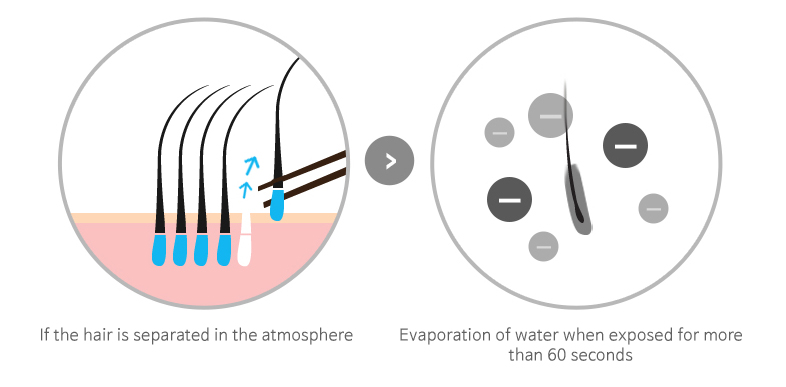
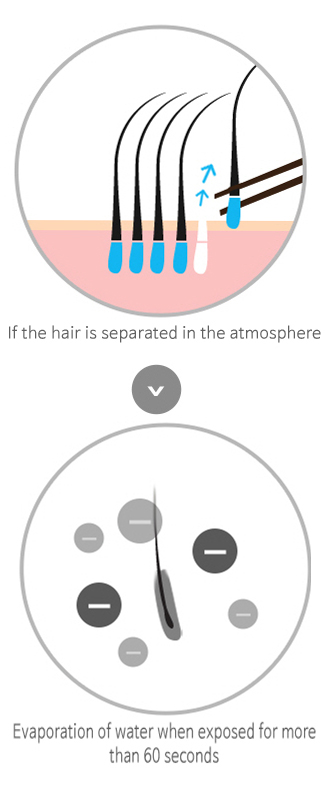
Why aqua cutting is essential
Hair follicle cells cannot survive when under exposure to air for only 60 seconds.
Hair follicle cells are stored in a safe hair follicle storage solution while waiting for the transplant. However, during the process of hair follicle separation, it was thought that the follicle cells were inevitably exposed to air in an unguarded state. AQUA cutting was borne from the question, “Is there any way to prevent water evaporation while ensuring there is adequate time to completely separate hair follicles, rather than reducing the exposure time to air by separating hair follicles quickly?” Although NHI New Hair did not invent the hair transplant procedure, we are continuing to introduce important discoveries in hair transplant and pursue landmark results.


Hyperbaric Oxygen Therapy
The Hyperbaric Oxygen Therapy Program supplies 100% oxygen at high pressure to
transplanted hair fullicle cells to keep them healthy even before blood vessels are created.

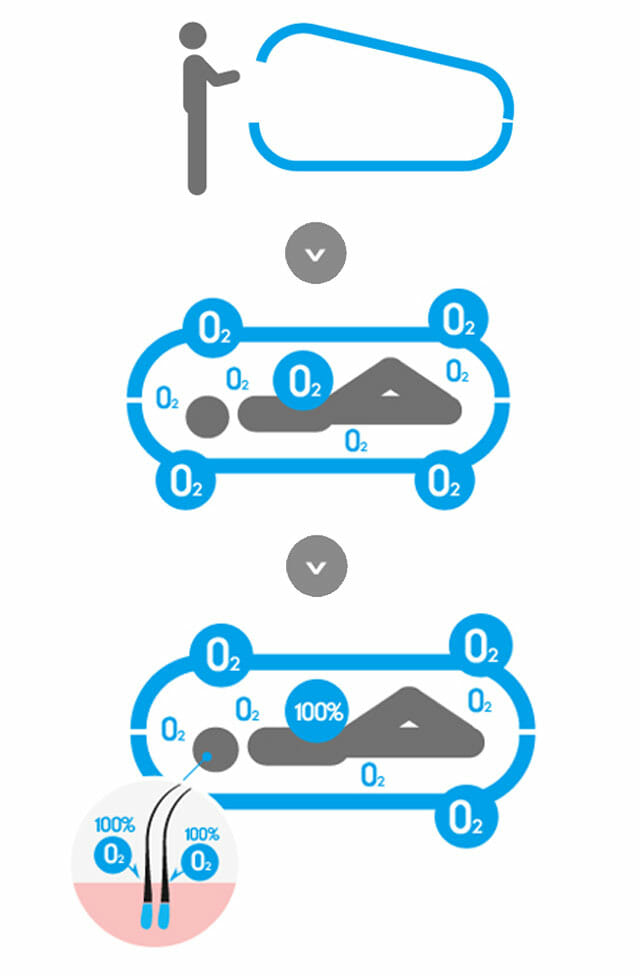
Efforts to Increase the Success Rate

FUE2 Enhanced Non-incision
It is New Hair’s non-incision technique, in which existing shortcomings have been addressed quickly, thus minimizing the cutting rate and abundant perifullicular tissue.

Snug Fit Using Slits
When the maximum number of hair fullicles is transplanted into the minimum number of pores, the engraftment rate will be higher.

Use of a High Magnification Microscope for the Entire Process
If a high magnification microscope is used for the entire process, the number of healthy hair fullicles can increase by 25%, compared to visual separation.

Aqua Cutting for Underwater Separation
Hair fullicles will be damaged if they are exposed to air for 60 seconds. Underwater separation can minimize the damage on hair fullicles, compared to the separation conducted in the air.

Effective Management after Hyperbaric Oxygen Therapy Transplant
With effective management for four days, optimal "hair fullicle health" is maintained for 12 months.

Long-term Preservative Sulution and 4 ℃ Low Temperature Water Retention Device
It maximizes engraftment by creating the same surgical environment as in an organ transplant.
어떤 유형도 결과 보장!
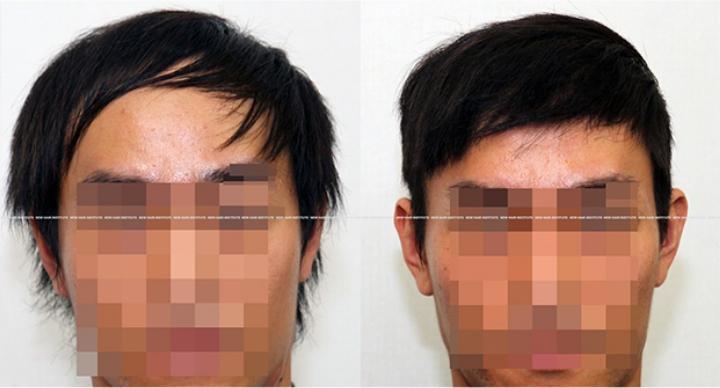
앞머리 갈라짐
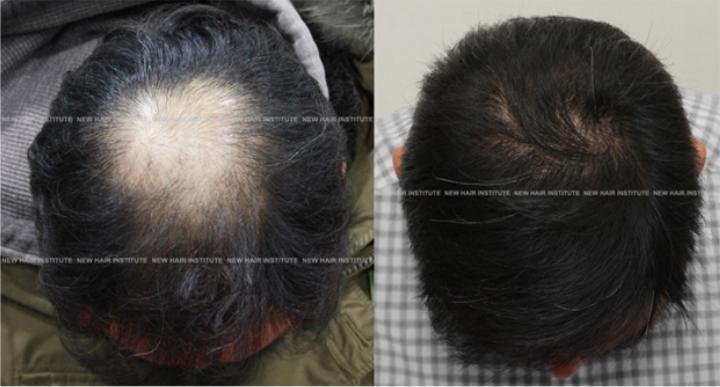
정수리 모발이식

구레나룻

눈썹이식
